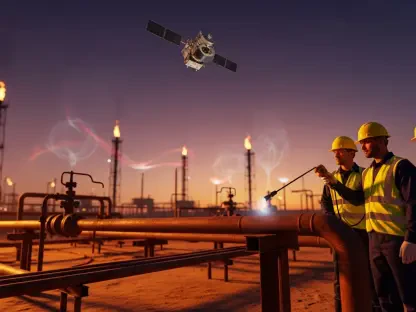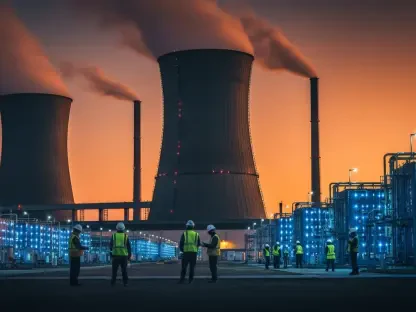In a world where energy security often dictates geopolitical alliances, India’s recent pivot to the United States for a significant portion of its fuel needs stands out as a striking development, especially amidst global trade tensions and tariff disputes casting shadows over bilateral relations. India’s decision to ramp up imports of liquefied petroleum gas (LPG) and crude oil from American shores signals more than just a business deal. This shift, rooted in strategic necessity, raises compelling questions about how energy partnerships can reshape diplomatic landscapes and address economic imbalances. What drives this collaboration, and what does it mean for two of the world’s most influential democracies?
This story matters because energy trade is emerging as a critical bridge between India and the U.S. at a time when a $40 billion trade surplus in India’s favor has strained ties. With punitive tariffs and geopolitical pressures mounting, the push for deeper energy collaboration offers a pathway to mend relations while securing vital resources for India’s growing economy. Beyond mere transactions, this partnership reflects a calculated effort to diversify supply chains and align mutual interests in a volatile global market, making it a pivotal chapter in international trade dynamics.
A Strategic Pivot in a Tense Trade Landscape
India, historically tethered to Middle Eastern energy supplies for its vast fuel demands, has embarked on a bold reorientation by turning to the U.S. as a key supplier. This shift is not merely about diversifying sources but also about navigating a complex web of trade disputes that have seen the U.S. impose a 50% tariff on Indian goods. By increasing energy imports from American markets, India aims to soften economic frictions and signal a willingness to recalibrate a lopsided trade balance, setting the stage for a redefined partnership.
The timing of this move is telling, as global uncertainties—ranging from instability in the Middle East to controversies over Russian oil imports—push India to seek stable alternatives. U.S. energy products, particularly LPG and crude oil, have emerged as viable options to reduce over-reliance on traditional suppliers. This strategic pivot, while still in its early stages, underscores a broader intent to weave energy security into the fabric of diplomatic negotiations with Washington.
Why Energy Ties Matter in U.S.-India Relations
Energy collaboration between India and the U.S. transcends transactional deals, serving as a cornerstone for addressing deeper bilateral challenges. With trade imbalances creating friction and tariffs adding pressure, energy imports offer a tangible way to narrow the economic gap while fostering goodwill. For India, this means access to diversified fuel sources; for the U.S., it translates into a market to offset trade deficits and strengthen strategic alliances in Asia.
Moreover, this partnership aligns with shared goals of energy security in an unpredictable global arena. As Middle Eastern conflicts and sanctions on Russian oil create supply risks, both nations see value in building a resilient framework for energy exchange. This mutual interest not only stabilizes economic ties but also positions energy as a diplomatic tool to navigate broader geopolitical currents, highlighting its role as a unifying force.
Key Moves in Deepening Energy Collaboration
A landmark agreement has crystallized India’s commitment to this energy partnership, with Union Minister Hardeep Singh Puri announcing a one-year deal for state-owned companies to import 2.2 million tonnes of LPG annually from the U.S. Gulf Coast. Representing nearly 10% of India’s total LPG needs, this contract—pegged to the Mount Belvieu pricing benchmark—marks a significant step away from Middle Eastern dominance in India’s energy mix. It reflects a deliberate strategy to anchor ties with American suppliers through structured, high-volume commitments.
In parallel, India’s imports of U.S. crude oil have surged to 568 thousand barrels per day in recent months, reaching the highest level in years. This uptick, driven by a need to balance supply sources, showcases a clear tilt toward Washington as a reliable partner. These concrete actions, backed by specific agreements and data, illustrate the scale of India’s diversification efforts and lay the groundwork for sustained collaboration.
The implications of these moves extend beyond immediate supply gains, as they signal India’s intent to integrate U.S. energy resources into long-term planning. With refinery and petrochemical expansions on the horizon for 2026-2027, these imports are poised to support industrial growth while addressing trade-related pressures. Such steps highlight a pragmatic approach to aligning economic needs with diplomatic objectives.
Voices from the Field: Insights and Perspectives
Indian Commerce Minister Piyush Goyal has framed energy as a vital pillar of U.S.-India collaboration, emphasizing its role in recent trade negotiations. Speaking during talks in September, Goyal highlighted how such deals could pave the way for broader economic harmony, reinforcing the diplomatic weight behind these energy agreements. His perspective underscores the potential for fuel trade to act as a catalyst for rebuilding trust amid tariff tensions.
Analysts offer a more nuanced view, balancing optimism with caution. Bineet Banka from Nomura notes that the $1 billion increase in LPG imports, while modest compared to the $40 billion trade surplus, represents a strategic gesture to ease U.S. concerns. On the flip side, Pankaj Srivastava of Rystad Energy warns of a potential $1.1 billion spike in import costs if reliance on discounted Russian crude—currently at 35% of India’s supply—drops to 15%, illustrating the financial tightrope India must walk in this transition.
Political undercurrents also shape the narrative, with President Trump’s evolving rhetoric on Prime Minister Modi adding layers of complexity. Recent warmer remarks suggest a thaw in tensions, yet persistent scrutiny over India’s 1.85 million barrels per day of Russian crude imports indicates unresolved friction. These diverse voices paint a picture of cautious hope, where energy deals hold promise but face significant hurdles.
Navigating the Future: Strategies for Sustainable Energy Ties
Looking ahead, India faces the challenge of balancing multiple energy sources to minimize risks while deepening U.S. ties. Diversification remains key, as evidenced by the pivot to American LPG and crude, but maintaining flexibility with other suppliers like Russia—whose imports stand strong despite external pressures—ensures supply stability. This dual approach allows India to hedge against geopolitical disruptions and price volatility in global markets.
Long-term contracts with U.S. suppliers could further solidify this partnership by locking in predictable pricing, a critical factor as India prepares for industrial expansions in the coming years. Additionally, leveraging energy agreements as bargaining chips in tariff discussions with Washington could yield economic concessions, turning fuel trade into a strategic asset. Such proactive measures are essential to sustain momentum in this evolving relationship.
Another vital strategy involves boosting domestic production to offset rising import costs, particularly as reliance on discounted sources fluctuates. By aligning infrastructure investments with import diversification, India can build a robust energy framework that supports both economic growth and diplomatic goals. These actionable steps provide a roadmap for navigating the complexities of global energy trade while strengthening bonds with the U.S.
Reflections and Next Steps
Looking back, India’s journey to deepen energy ties with the U.S. unfolded as a calculated response to trade tensions and supply vulnerabilities. Each agreement, from LPG contracts to crude oil surges, represented a brick in the foundation of a renewed partnership, even as challenges like cost increases and geopolitical scrutiny lingered. The effort to balance diverse suppliers while addressing a significant trade surplus stood as a testament to strategic foresight in a turbulent global landscape.
Moving forward, policymakers and industry leaders must prioritize frameworks that ensure price stability and supply security, potentially through extended U.S. contracts and investments in domestic energy capabilities. Exploring joint ventures in renewable energy could also complement fossil fuel deals, aligning with global sustainability trends. These considerations offer a path to transform temporary fixes into enduring alliances, paving the way for a more balanced and resilient economic relationship between two powerhouse nations.









